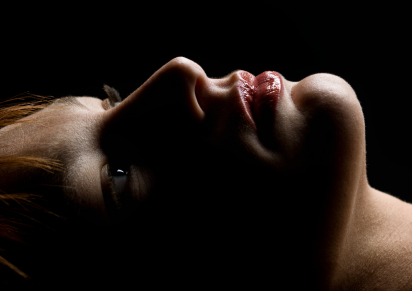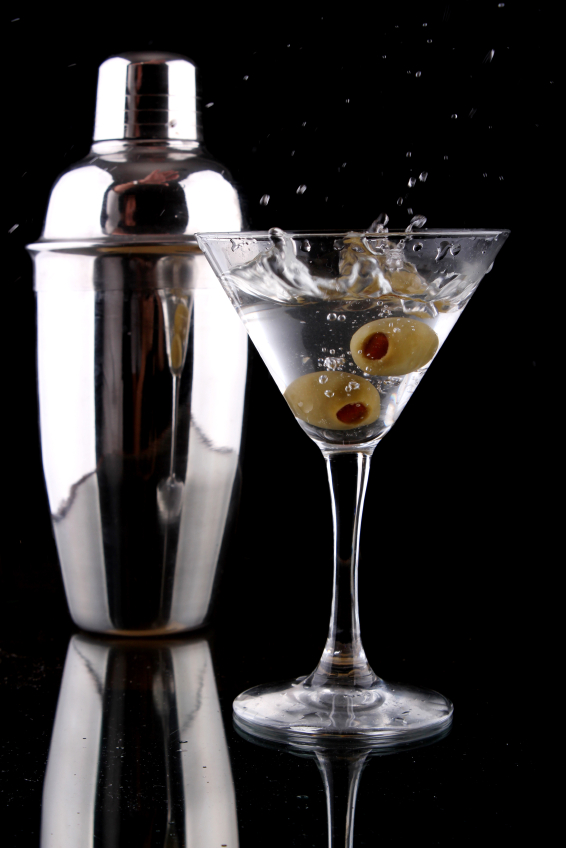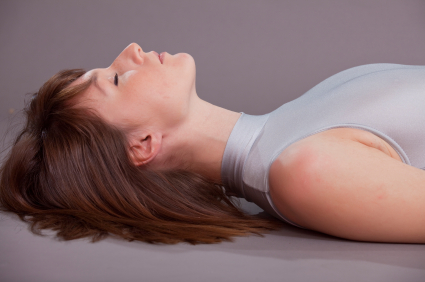Sleep…still between the mattress, the pillow and a hard place
Sleep. Oh, how you elude me.
Whether it’s hormones or stress, I’m beginning to forget what a full night’s sleep looks and feels like. In fact, if you ask me to tell you when it was that I last had a full night’s sleep, I’d probably tell you that I don’t recall. So, yes, I keep writing about it in hopes that the magic solution will one day transcend my fingertips and actually result in…8 full hours! What a concept!
Meanwhile, back the real world, I have encountered yet another study trying to explain why middle aged women don’t get the zzz’s they need. This time, hot flash bother appears to be the golden ticket. However, even more interesting is the fact that the researchers who conducted the study say that the “concept of bothersome”/bother might explain disparate findings between studies that point to hot flashes as the primary sleep deprivation factor versus those that point to overall wellbeing and life stressors.
To provide a bit of context, this particular study is part of an ongoing trial known as STRIDE (Do Stage Transitions Result in Detectable Effects), which is looking at women in various stages of menopause (45 to 65 years). And, as part of STRIDE, these women were asked to complete two, annual questionnaires, the first relating to basic questions on menopause status, medical history, tobacco/alcohol use, etc, and the second, relating to sleep and how hot flashes were or were not interrupting their lives. Sleep quality scores were based on trouble falling asleep, waking several times during the night or waking early and then not falling back asleep. Frequency and bother of hot flashes were rated on a scale of 0 to 5, including how much they interfered with work, social activities and leisure.
Importantly, women who reported having bothersome hot flashes (32%) were twice as likely as their peers reporting no hot flashes to experience some degree of sleep interruption. Additionally, when hot flashes interfered with life, they interfered with sleep.
So, what does this mean?
Perception is key. Consequently, when women perceive that their symptoms interfere with aspects of their lives outside the bedroom, especially leisure activities, they seem to interfere with lives inside it, namely, sleep.
What is lacking in this study is information on other possible factors that might influence overall sleep disturbance, such use of certain medications or depression. And, conclusions were based on self-reports, which we all know can be biased. Still, you have to wonder about the psychology, and how much, as women, our brains influence our lives and how we respond to key parts of them, like sleep.
Meanwhile, we are still between the mattress, the pillow and a hard place, at least I am. But, we are finally coming closer to discovering the why.
Read MoreWednesday Bubble: Bacon in the boudoir…keep it sizzlin’!
Every now then I digress from more relevant matters and get to the lighter, brighter side. And since, I can’t possibly make this up I’ll just get right to it.
Two words: bacon lube.
Yes, that’s correct. Bacon Lube. You too, can be a bacon lover. No, I did not say lover of bacon, but…bacon lover. Baconlube™ is the “world’s first bacon-flavored personal lubricant and massage oil.” Why? Because everything should taste like bacon. Even sex. Some people equate bacon and sex. I know some of these people. I really do!
Me? I’d rather keep my eating to… well, just use your imagination.
p.s. If lube ain’t up your alley, the company offers plenty of bacon products so that you can create your own personal bacontopia. Even bacon mmmenvelopes for those major mailing events. And irony of irony! These products are certified Kosher! SAY WHAT?! Kosher Bacon? Sacrilege!
What’s a Wednesday without a bit of sizzle, baby….?
Oink, oink!
Read More
Crow’s feet? What crow’s feet?!
Crow’s feet. Most of us start to develop them in our mid to-late 30s and by the time we reach the age of 50, they’re pretty pronounced. This is no surprise because aging skin is associated with a decline in elasticity and moisture. And, let’s face it, if you grew up with light-coloured eyes like I did, you have an even greater tendency to squint in bright light, another factor contributing to those tell tale lines around the eyes. In women in particular, crow’s feet are a rule and not an exception, as aging is accompanied by a loss of estrogen, which has been linked with as great as a 30% loss of collagen in the dermis (the thick, sturdy layer of connective tissue that comprises about 90% of the skin’s thickness) within the first five years of menopause. Collagen, which is the most abundant protein in the body, is responsible for skin’s durability and strength. As it declines, skin starts to sag and wrinkles form. Oh, happy day!
Unfortunately, researchers continue to debunk claims that replacing estrogen can improve the skin’s appearance. That’s the bad news. Likewise, don’t look for expensive moisturizers or facials to do the trick either. However, there are data that suggest that intake of soy isoflavones may improve aging skin. And once again, S-equol is the winner in the isoflavone antiaging department.
A bit of background…
If you are new to Flashfree, you may be unfamiliar with S-equol. Briefly, S-equol is a metabolite of a major soy isoflavone called daidzein. It has a particular affinity for estrogen receptors and possesses some estrogen-type activity of its own. S-equol is produced in the gastrointestinal tract however the ability to actually manufacture it depends on the presence of certain microflora there. Consequently, only 30% to 60% of individuals are actually able to produce S-equol on their own (although this figure is believed to be higher among Asians and vegetarians). (You can read a full range of posts on S-equol here)
Because skin cells responsible for producing collagen express estrogen, researchers believe that S-equol and its affinity for estrogen receptors may impact skin very similar to the way that estrogen does. In fact, when 101 Japanese menopausal women randomly took 10 mg or 30 mg standardized S-equol (SE5-OH) or a sugar pill daily for 12 weeks, that is exactly what they found. Even more interesting was the fact that S-equol was studied in women who do not produce it naturally in their bodies (even though s-equol producers are believed to gain greater benefit from soy products).
Over weeks, researchers measured numerous skin parameters, including crow’s feet, wrinkles, the degree that the skin was hydrated, skin elasticity and loss of water through the skin. To equalize the playing field, measurements were taken in a room that was the same temperature and humidity level each time, and women were instructed to remove any cosmetics using the same cleansing foam 20 minutes before each exam. They were also advised not to alter anything about their diet or sun exposure during the study period.
The findings?
Both 10 mg and 30 mg daily standardized S-equol significantly improved crow’s feet wrinkles/reduced the total wrinkle area compared to placebo tablet. And, 30 mg daily dose also significantly decreased wrinkle depth as well. What’s more, ingesting S-equol supplements did not appear to affect uterine or breast tissues or hormone status, indicating that unlike hormone replacement, using S-equol to combat declining estrogen levels is safe.
So, how does it work?
Although researchers say that the need a longer observation period to confirm S-equol action on skin, they believe that like hormone therapy, it gradually boosts the quantity and quality of skin collagen, and may even help preserve skin hydration from within. Additionally, because skin aging does not solely rely on estrogen levels, S-equol may also act as an antioxidant and help transport nutrients to the upper and middle skin layers. And more importantly, other studies have shown that when Japanese,White, Hispanic and African-American women were compared, the Asian women had the least amount of wrinkling and sagging. If you translate the findings and consider the degree of differences in wrinkling among ethnic groups, it is very possible that S-equol may benefit women living in the U.S. even more than their Japanese peers.
Is it possible that S-equol is truly a Fountain of Youth is in pill form? Yikes! This is pretty darn exciting! Me? I’m off to the store in search of standardized S-equol. Crow’s feet? What crow’s feet?!
Read MoreShaken. Not Stirred.
I have been inspired by my friend Gini Dietrich’s weekly Gin and Topics posts over at Spin Sucks, so much so that I’ve decided to up the ante and bring back a Roundup-like feature to Flashfree (if you’re unfamiliar with the Roundup, think monthly highlight recaps. You can find them here.)
Shaken. Not Stirred is intended to highlight a few choice finds that I believe are worthy of mention in this space. They might not warrant an entire post, but they’ve shaken me up in one way or another to break (or pause, if you will) from our normally scheduled programming and deliver information in a format that is distinct from what you’ve come to expect. In that vein, this feature won’t appear on a regular schedule as I do believe that into every blog should flow a bit of the erratic; after all, that’s what keeps things lively, right?
So, without further ado… I bring you the Shaken. Not Stirred.
Bottom’s up!
- There’s a new kid in town and you may want to get to know him better. So you chat about him online with your other online pals, weigh his pros and cons. And then decide collectively whether or not to befriend him. That’s what the new patient portal Treato is doing. Only this time, the new kid is a medication you might be considering taking for your menopause-related depression and you’re not sure about its side effects. Can you find someone just like you to talk to about it, read/hear their experiences, obtain advice from a medical expert who might be weighing in and then make a more informed decision? Treato is doing just that in one consolidated location. Granted, I’ve not thoroughly vetted the site for accuracy and like any medical information that circulates on the web, ‘whatever is received’ requires vigilance on the part of the user. But I am a huge advocate of leveling the healthcare playing field and patients should be participating in their healthcare. Check it out. And let me know what you think.
- Who knew that weight loss could be so easy? One pair of Zaggora HotPants can help you zap away that unsightly cellulite. How? By incorporating “a comfortable bioceramic material that emits infrared rays to help wearers naturally and efficiently amp up weight-loss regimens. The shorts’ Celu-Lite technology smoothes thighs and other dimple-prone areas by galvanizing the skin’s internal zamboni to promote a deep warming of body tissues and promote lymphatic drainage. This process boosts sweating by up to 80% and aids in eliminating the toxins responsible for cellulite. Gotta give the company props for the term ‘internal zamboni’ but the reality is that nothing has been scientifically proven to rid the body of cellulite.
- Since we are on the topic of do’s and don’ts, why not end this week’s Shaken. Not Stirred with a bit of alcohol-related news? My guess is that many of you have seen the news about drinking and breast cancer and are as confused as I’ve been. My friend Elaine Shattner, over at Medical Lessons Blog, has done an excellent job distilling the facts down to ‘what you need to know,’ much better than I ever could have. Like me, Elaine (who is a trained oncologist, among other things) agrees that women no longer need to be stigmatized by their decisions, writing “Women, in my experience, are generally more vulnerable to the put-downs of others. And so my concern about the BC-alcohol link is that this will, somehow, be used, or have the effect of, making survivors or thrivers or women who haven’t even had breast cancer feel like they’re doing the wrong thing if they go to a party and have a drink. And then they’ll feel badly about themselves.” Do yourselves a favour: read this post.
And if you would, can you do me a favour and weigh in on Shaken. Not Stirred?
Yay, nay or meh?
Read More
Wednesday Bubble: Can yoga decrease insomnia, improve sleep quality?
I love that yoga practice continues to take center stage in Western medicine. Truly, this is mind boggling because rarely, if ever, has an alternative practice been given so much credence within the confines of a medical philosophy that allows little outside the box. However, just a few weeks ago, yoga made the headlines again with data showing that it might be useful for treating lower back pain than standard therapies.
In menopause, yoga practice has been explored for stress relief, to improve wellbeing and as a tonic for vasomotor symptoms. Notably, the latter are considered to be partially responsible for significant sleep issues that occur during and after menopause. Indeed, some data show that up to 81% to 83% of women may have sleep complaints and 52%, insomnia.
Yet, like many strategies, yoga is not a one size fits all practice and there are many branches and types, some being meditative and others breathing, and some more physical than others. These distinctions can make it difficult to standardize studies and apply their results. Still, I was thrilled to stumble across a study evaluating the effects of a specifics sequence of yoga on physical and mental health, and symptoms in menopausal women experiencing insomnia. Importantly, this study used a scientific, randomized controlled design to insure that test conditions were up to par with Western methodological standards.
Basically, researchers assigned 44 menopausal women diagnosed with insomnia to one of three group:
- a control group who ingested 500 mg calcium daily
- a passive stretching group, who participated in two, one hour passive stretching classes a week (including stretching of back, stomach, ankles, knee, thigh, elbow, shoulder, wrist and neck) or,
- a yoga group consisting of two, one hour sessions weekly. These yoga sessions were based on a sequence using stretching positions (asanas) with strong and fast breathing (bhastrika) followed by directed relaxation.
Women in these groups also took 500 m g calcium daily.
The study, which lasted for four months, showed that engaging in a particular sequence of yoga significantly reduced vasomotor symptoms and improved sleep/insomnia severity and mental health compared to passive stretching or simply taking calcium. Women who took the biweekly yoga classes also had higher quality of life scores and better resistance to stress. And while the passive stretching group certainly did not do as well, they did trend towards these benefits as well, especially with regards to the degree of reported stress in their lives.
The researchers believe that regular yoga practice, at least with these particular sequences, alters the nervous system and increases brain concentrations of a potent neurotransmitter – λ-aminobutyric acid – to help improve sleep patterns and reduce vasomotor symptoms. Likewise, stretching may lead to a state of calm that results in reduced metabolism, heart rate, blood pressure, breathing and muscle tension, all of which contribute to stress (or stress reduction).
Granted, this is a small study but it was rigorously designed and suggests that yoga may help sleep issues associated with aging and menopause. I, for one, want to run into a yoga studio. I don’t recall the last time my zzzz’s were not interrupted.
Read More











